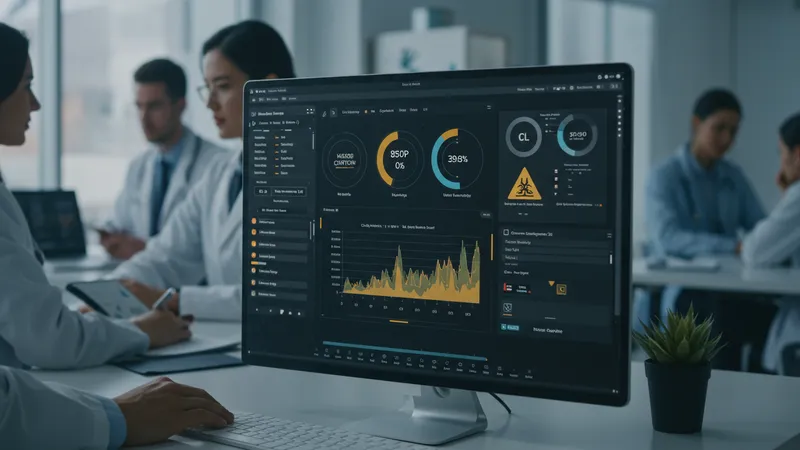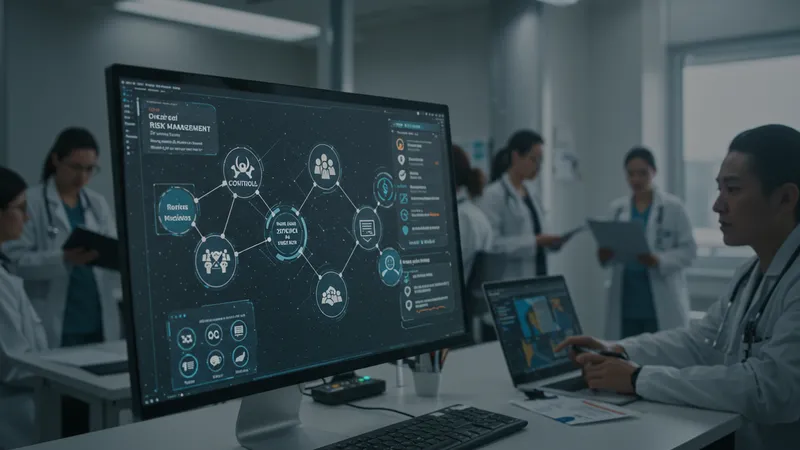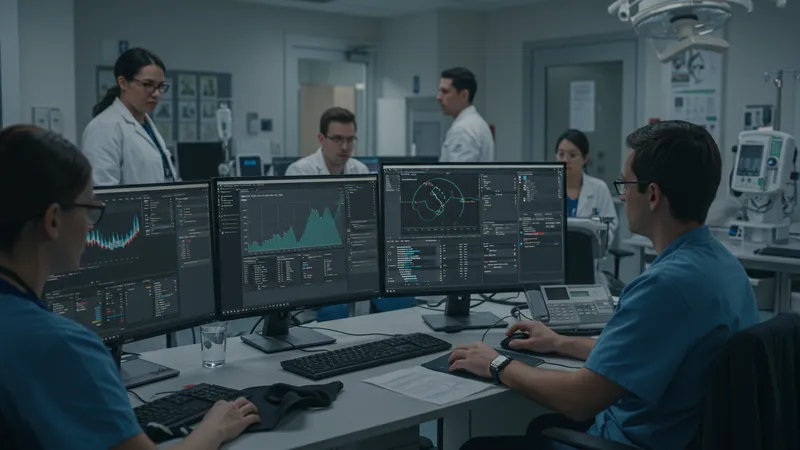

The development, manufacturing, and post-market surveillance of medical devices involve inherent complexity and responsibility. With global standards steadily rising, organisations cannot ignore risk management in the sector. Medical device risk management software refers to digital systems designed to continuously identify, evaluate, mitigate, and monitor potential safety hazards across the device lifecycle, ensuring both regulatory compliance and the protection of patient wellbeing.
Such software supports accuracy and consistency in documenting every aspect of risk: from hazard analysis through mitigation actions and ongoing evaluation. The ultimate aim—beyond meeting ISO 14971 and local regulatory requirements—is to reduce device failures, enhance traceability, and foster a culture of safety throughout the organisation. These platforms play a pivotal role for manufacturers, developers, and clinicians striving to meet the dual challenge of compliance and uncompromising patient care.

Greenlight Guru excels with a user-friendly interface specifically built for medical device companies. Its preconfigured workflows and audit-ready dashboards minimise the learning curve, making compliance tracking more straightforward for teams. It has found significant traction in the UK and Europe due to support for both international and local standards, which ensures that organisations keep pace with evolving regulatory expectations.
Codebeamer is especially popular among larger enterprises in the United Kingdom. It facilitates comprehensive risk analysis, linking requirements, tests, and mitigations in real time. Its strength lies in customisability, advanced traceability, and the ability to align risk management with agile or dev-ops methodologies tailored for the UK’s dynamic medical technology sector.
MasterControl Quality Excellence is a robust, widely-used solution with deep risk management, corrective actions, and document control features. For organisations operating multiple facilities and facing frequent audits in the UK, its automated workflows and reminder systems ensure nothing falls through the cracks—from design reviews to post-market obligations.
Comparatively, these platforms help UK manufacturers streamline regulatory submissions to agencies such as the MHRA (Medicines & Healthcare products Regulatory Agency), reducing manual error risks and accelerating time to market. They are frequently used by both established medical technology firms and fast-growing startups, aligning risk oversight with everyday business processes and digital transformation goals.
Ultimately, risk management software forms the backbone of device safety and compliance in the United Kingdom. Each system brings unique strengths, from tailored dashboards to advanced traceability, and understanding these differences is essential for selecting the most effective solution. The deeper details reveal even more valuable insights ahead, especially as we explore key features and the measurable impact of each software in real-world compliance environments.
At the heart of modern medical device risk management software is an array of specialised capabilities designed to address regulatory and operational challenges unique to the healthcare sector. Leading platforms enable organisations to establish and maintain detailed risk files, linking every hazard to corresponding controls, mitigations, and verification activities. This level of granularity helps companies ensure that no step of the risk management process is overlooked, which is vital under both UK and international standards.

Automated workflows are another critical feature distinguishing top-tier risk management platforms. These workflows notify team members about required reviews, required updates, or pending corrective actions, thereby closing the loop between identified risk and documented response. Such automation significantly reduces the administrative burden on compliance teams and allows greater focus on strategic safety issues relevant to medical devices used within the United Kingdom.
The integration of advanced reporting and analytics is also central to the most impactful risk management tools. UK manufacturers benefit from real-time dashboards that enable them to monitor compliance statuses, identify emerging issues, and generate audit-ready evidence rapidly. This visibility can be transformational for both startup innovators and established organisations, ensuring their risk profiles are not only understood but proactively managed at every stage.
One standout detail of the platforms listed is their support for change management and document control. As new guidance or regulations are released—such as those periodically published by the MHRA—organisations can update hazard analyses and risk mitigations quickly, with changes fully traceable across workflows. In the context of the fast-evolving UK medical device regulatory landscape, such adaptability is invaluable for continued compliance and risk reduction.
Adhering to United Kingdom device regulations requires ongoing attention to the evolving guidelines issued by bodies like the MHRA. Risk management software assists device manufacturers in demonstrating compliance against this ever-changing regulatory backdrop. The ability to produce comprehensive risk files, complete with cross-referenced evidence and mitigations, is particularly important during regulatory reviews and post-market surveillance in the UK.

For example, Greenlight Guru offers UK-ready templates and workflows which align closely with local requirements, minimising the customisation needed out of the box. This allows UK-based organisations to streamline the fulfilment of technical documentation and vigilance reporting needed for market access and safety monitoring. MasterControl and Codebeamer also routinely update their compliance modules to reflect updates from British and broader European regulations, ensuring ongoing alignment.
Traceability is another regulatory requirement that these platforms address. By streamlining links between device hazards, controls, and testing outcomes, organisations can demonstrate robust safety reasoning to UK regulators. Such traceability not only reduces audit risk but also enhances the quality of the risk management process, making it easier to adapt to changes in law or best practice issued by the UK government.
Automated recordkeeping and detailed audit trails further reduce human error, helping to evidence due diligence during both internal and external assessments. For manufacturers and distributors operating in the United Kingdom—where failure to comply with documentation standards can carry significant commercial and reputational consequences—these tools are a vital component of sustained regulatory success.
Robust risk management software is not just about ticking compliance boxes; it directly contributes to patient safety by enabling systematic identification and resolution of device-related hazards. In clinical settings across the United Kingdom, clear and accurate documentation helps ensure that medical devices perform as intended and reduces the chance of adverse incidents linked to overlooked risks.

Greenlight Guru, MasterControl, and Codebeamer each provide real-time risk visibility, helping cross-functional teams—engineers, QA personnel, and clinical users—quickly react to potential threats. The software’s ability to handle ongoing post-market surveillance is especially valuable, enabling rapid root-cause investigation of safety signals or user-reported problems in NHS and private healthcare environments.
Furthermore, the use of purpose-built risk management tools supports a culture of continuous improvement. Automated reminders and escalation pathways prompt timely review and resolution of open issues. This agile approach aligns well with the demands faced by innovative device start-ups and established manufacturers in the UK, reinforcing a proactive stance on patient safety.
By translating regulatory requirements into daily operational workflows, these platforms bridge the gap between compliance and best practice. For British organisations, this translates into improved competitive positioning, better audit outcomes, and—most importantly—a tangible reduction in device-related safety incidents affecting patients and clinicians nationwide.
The future of medical device risk management in the United Kingdom is poised to be shaped by digital transformation, tightening regulatory expectations, and the rise of data-driven oversight. Software vendors are increasingly investing in artificial intelligence and machine learning features, aiming to predict emerging risks before they arise using patterns from vast historical datasets. These capabilities will likely enhance both compliance and patient safety by surfacing issues that were previously undetectable using manual methods.

Another visible trend is the closer integration of risk management systems with broader digital health platforms and electronic health records (EHRs). This connectivity can offer richer, near real-time feedback on device performance in diverse NHS and private healthcare settings across the UK, empowering manufacturers to respond faster and more effectively to concerns or recalls.
Looking ahead, regulatory agencies in the UK are expected to continue raising the bar for traceability and proactive risk management. Platforms such as Greenlight Guru, Codebeamer, and MasterControl are all responding with modular, scalable solutions adaptable to new device types and market conditions. Their ongoing commitment to updating compliance features is set to remain a cornerstone of risk management in British medical technology.
For manufacturers, developers, and clinicians, selecting the right risk management software is about much more than compliance. It’s about ensuring device trustworthiness, protecting reputation, and most crucially, delivering safer patient outcomes in an ever-evolving healthcare landscape in the United Kingdom.